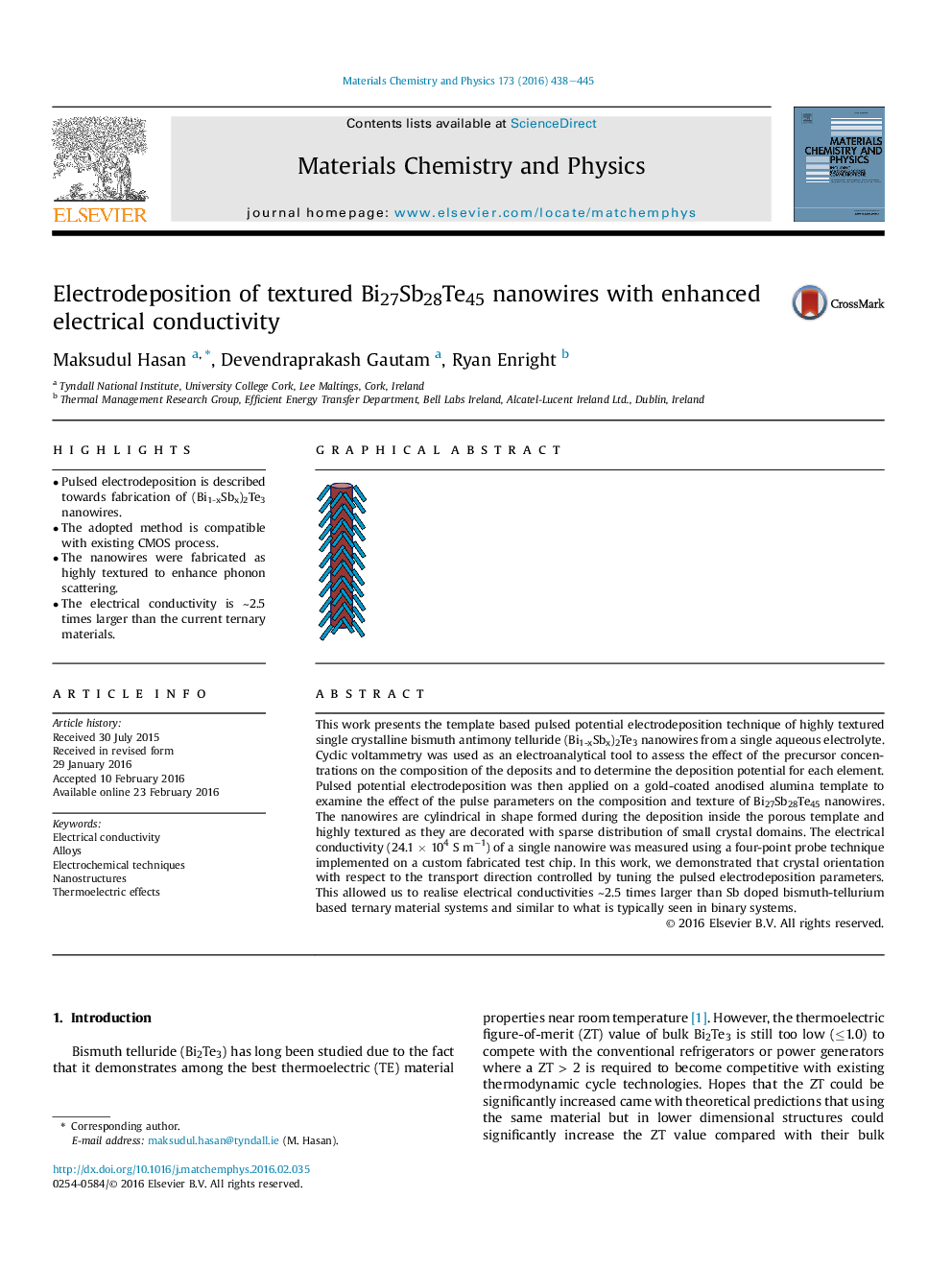| Article ID | Journal | Published Year | Pages | File Type |
|---|---|---|---|---|
| 1520711 | Materials Chemistry and Physics | 2016 | 8 Pages |
•Pulsed electrodeposition is described towards fabrication of (Bi1-xSbx)2Te3 nanowires.•The adopted method is compatible with existing CMOS process.•The nanowires were fabricated as highly textured to enhance phonon scattering.•The electrical conductivity is ∼2.5 times larger than the current ternary materials.
This work presents the template based pulsed potential electrodeposition technique of highly textured single crystalline bismuth antimony telluride (Bi1-xSbx)2Te3 nanowires from a single aqueous electrolyte. Cyclic voltammetry was used as an electroanalytical tool to assess the effect of the precursor concentrations on the composition of the deposits and to determine the deposition potential for each element. Pulsed potential electrodeposition was then applied on a gold-coated anodised alumina template to examine the effect of the pulse parameters on the composition and texture of Bi27Sb28Te45 nanowires. The nanowires are cylindrical in shape formed during the deposition inside the porous template and highly textured as they are decorated with sparse distribution of small crystal domains. The electrical conductivity (24.1 × 104 S m−1) of a single nanowire was measured using a four-point probe technique implemented on a custom fabricated test chip. In this work, we demonstrated that crystal orientation with respect to the transport direction controlled by tuning the pulsed electrodeposition parameters. This allowed us to realise electrical conductivities ∼2.5 times larger than Sb doped bismuth-tellurium based ternary material systems and similar to what is typically seen in binary systems.
Graphical abstractFigure optionsDownload full-size imageDownload as PowerPoint slide
